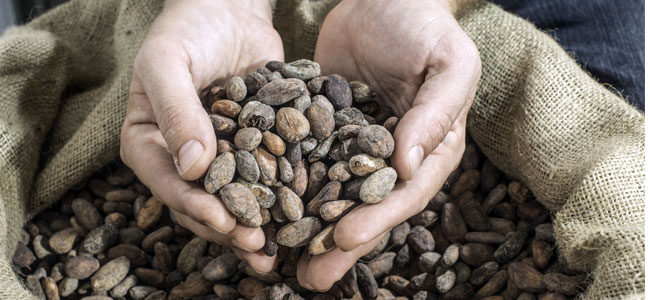Are we heading for a chocolate shortage? – We spend more than 75 billion dollars on chocolate annually worldwide. Also, the retail consumption statistics say that from 2012/2013 to 2017, the chocolate consumption has had a whopping jump from 7 million to 7.7 million tons. So, we have all the reasons to jump up when we hear of experts predicting a shortage of chocolates around 2020.
However, the real picture can be inferred from the conditions in the region that produces the largest amount of chocolate beans or the cocoa beans. Economic and geopolitical turbulence in Ivory Coast, the world’s largest cocoa producer or the rising demand by the Asian countries has slowly led to a more-nuts-and-less-chocolate situation.
The History of Chocolate
The history of chocolate can be traced back to as far as 1900 B.C., being consumed as a bitter drink by pre-Olmec cultures where Mexico currently resides. In the 14th century, the Aztecs began to trade the Mayans for cocoa beans, but it was not until the 1500’s when Spain began exploration of the west and brought back cocoa beans to Spain.
Cocoa Plantations and Modern Chocolate
Soon the love of chocolate spread across European countries in the 1600’s, when the daughter of Spanish King Philip III wed French King Louis XIII. Chocolate became very popular at this time, and we witness the first European cocoa plantations during this time period.
In 1828, Dutch chemist Coenraad Johannes van Houten invented the cocoa press and changed the way that chocolate was produced, making cocoa solids more water soluble, and removing the bitter component.
In 1847, the first solid chocolate bar was created by J.S Fry and Sons, and in 1879, Rodolphe Lindt invented the conching machine that gave chocolate a great taste and started milk chocolate development.
In the late 1800’s and early 1900’s, major companies such as Hershey and Cadbury make their mark in history with enticing packaged chocolates, which are still popular to this day.
Chocolate Consumption Trends Today
When an average Swiss person consumes 19.8 lbs. of chocolate per year, Germany, Ireland, and the UK are the close competitors in consuming around 16 to 17 lbs. of chocolates every year. Among all these statistics, the year 2017 saw some popular chocolate consumption trends:
- Premium: People want to know where their chocolate originates, and want the best ingredients from exotic locations, such as Himalayan sea salt, for example.
- Healthy: We see sugar reduction trends, dairy-free chocolate, and chocolate superfood bars. People want ways to consume chocolate, but they also want it to support their healthy lifestyles and diets. There’s even an increase in varieties of chocolate in fitness bars for people who diet and exercise.
- Clean: Fairtrade certified chocolate is becoming increasingly popular. People want to know that their chocolate was manufactured in ethical environments and that it supports an eco-conscious, modern-day
However, with the change in the way we consume chocolate from just wrapped bars to 70% dark chocolates – it’s the fault of rich posh chocolate demand that has disturbed the demand-supply chain of chocolate production.
The Cocoa Crisis
Ghana and the Ivory Coast make up for nearly 50% of the worlds chocolate production and they are experiencing a financial crisis, such as decreasing demand and drops in international prices.
In 2012, Cargill launched Cargill Cocoa Promise in an attempt to extend better incomes and living conditions to farmers, and deliver a more “sustainable supply of cocoa and chocolate products.”
The World Bank says that “the crop represents 15 percent of Ivory Coast’s gross domestic product and more than 50 percent of its export earnings.” But because prices are down 40%, and the Ivorian government has raised the prices for what farmers are getting, cocoa buyers are backing out of contracts.
This means that there is too much cocoa being stored in warehouses, not enough buyers, and no money to pay the cocoa farmers. This is starting to affect not only Ghana and the Ivory Coast but everyone around the world.
Market Forecast Could Have Avoided Cocoa Crisis
A similar crisis had happened to the frozen food industry in the recent past when more food options were being available to consumers, but the food sales were not rising as much. But because of some initiatives with market forecast research, not only the frozen food industry can form a demand-supply balance, but also come up with appealing marketing techniques. Now, major frozen food companies are changing the way they present frozen food options to prospective buyers, offering them organic ingredients, eco-conscious packaging, and boosting marketing techniques that are helping re-imagine the frozen food brand image.
The cocoa crisis could have potentially been avoided if similar market forecast research would have been conducted by the chocolate manufactures to determine the current state of the cocoa industry. Market research in the form of supply demand trends reports could have helped accurately determine the supply and demand rates worldwide, as well as the growth rate of cocoa in Ghana and The Ivory Coast. Also, further research could have indicated farmers’ earnings from the government, and its relation to the cocoa industry’s projected sales forecasts.
Conclusion
Research and Analytics companies, such as Research Optimus (ROP), can provide valuable market forecast research capabilities across all industries, so that companies can anticipate market fluctuations, changes in consumer demands, factors associated with the demand-supply chain, and avoid negative impacts such as the Cocoa Crisis.
– Research Optimus





